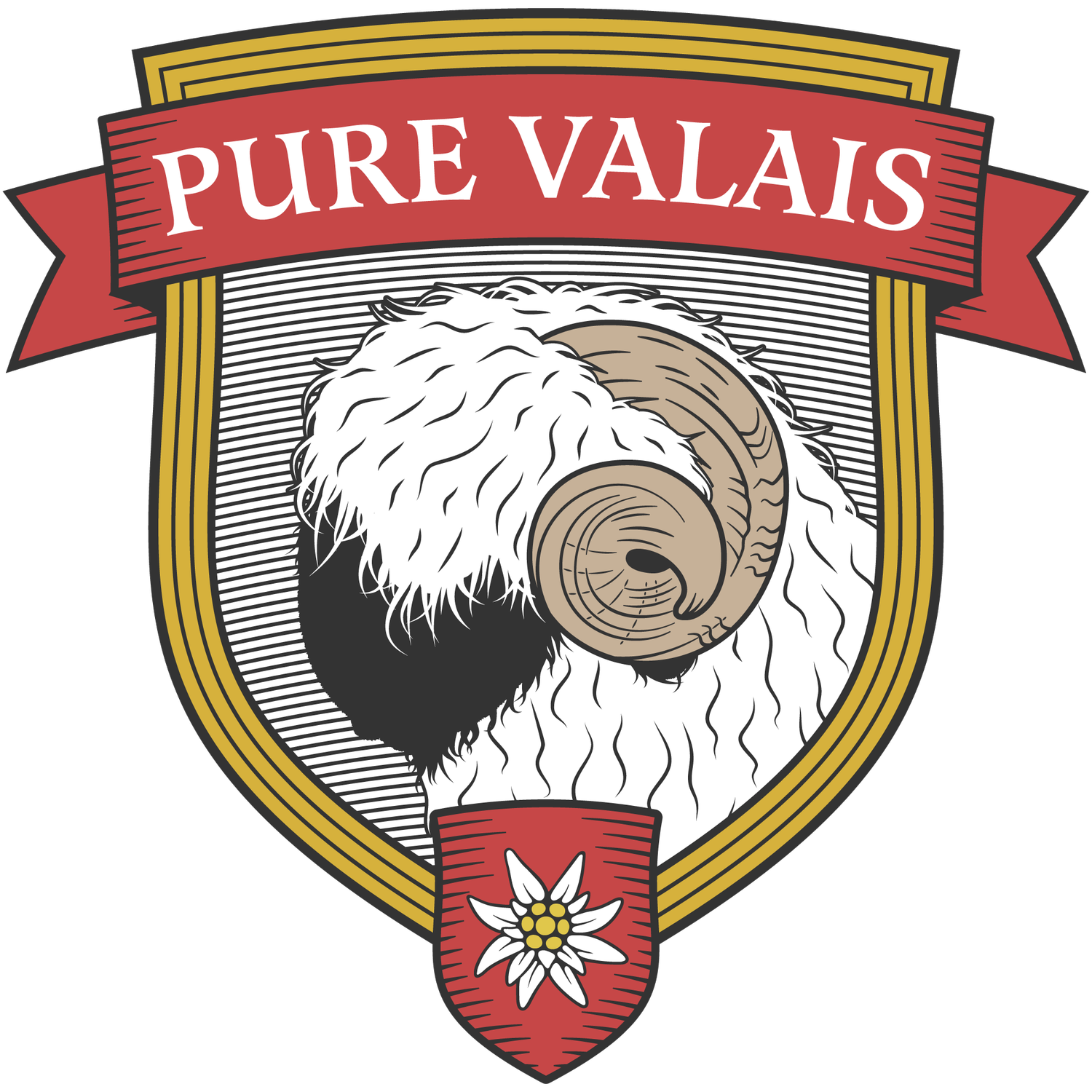The Importance of Horn Trimming with Marita Tauni
Disclaimer:
At Pure Valais, we are committed to comfort and safety, improvement and well being of the animal. Everything undertaken here showing horn trimming is under the guidance of an experienced veterinarian whether it be Marita Tauni or Ken Leaman, who is one of our founding partners.
Both Marita and Ken have had long careers in large animal medicine. Both are mostly retired from servicing clients and their focus is on management of their own flocks on their farms. Ken Leaman is on the board of the Valais Blacknose Sheep Society USA and Marita Tauni is the founder and chairman of the Swedish Valais Blacknose Society.
One experienced vet learning specific management from another experienced vet. Professional networking and knowledge sharing; the road to success!
Read to the end of the article to watch a horn trimming demonstration done by Marita Tauni at this year’s Black Sheep Gathering Event.
Marita Tauni visited us at Wild Rose Farm shortly after the Black Sheep Gathering to teach us the importance of and how to manage our sheep’s horns for optimal health and well being.
Marita is an experienced veterinarian, and Valais Blacknose breeder from Sweden. She’s the founder and chairman of the Swedish Valais Blacknose Society and also one of the judges selected for the upcoming National Valais Blacknose Sheep Show USA in Iowa, September 29th & 30th.
The reason we are sharing this is for the health and well being of these animals. Everyone is aware of things like vaccinations and parasite control, hoof trimming and good nutrition, but with the Valais rams and for those who haven’t had Valais sheep before there is another significant issue to be aware of.
If the horns grow too close to the sheep’s face, there is a potential for damage to the skin which can lead to fly strike and pressure wounds.
It can be an easy thing to miss, especially when in full fleece an episode of fly strike resulting from the horn damaging the side of the face. Pressure wounds, no air and heat is the perfect recipe for fly strike.
Ideally one should be able to get a finger between the horn and side of the head. If the horn is too close for comfort, using a small file on the inside curve of the horn can make a big difference and is an easy solution. In some older rams where the horn is more robust, it may be necessary to remove a sliver of horn tissue.
We purchased a set of files so we had a choice of what worked the best for different areas. Just regular woodworking files in the set, some flat, some curved, some round. I also recommend having a hoof rasp like the one used by farriers for horses. The longer the file, the easier it is to use.
The goal is to remove enough horn to get it off of the face and allow air between the horn and the face without cutting too deep into the horn causing pain and/or bleeding. Every horn is different and one should consult their veterinarian to assess how far into the horn you can cut safely.
Sheep do have feeling in their horns if you go too deep, much like trimming your own nails.
Our biggest priority is comfort and safety when working on any animalistic horns. We only do this to improve the comfort and well being of the animal.
We have a ram whose horns were touching his face. The horns will continue to grow and therefore this situation had to be dealt with for his health and well-being.
A vertical cut was made on the inside part of the horn and a section approximately 3/8th inch thick and 2 inches tall was removed and then filed down with a small file to smooth the edges. Below is a video of us using a Ryobi Reciprocating Saw to get the job done! No blood and no pain.
As a side note, pay attention to your Valais lambs as it’s not uncommon to find a small spur horn associated with the main horn, almost like a second little horn. It’s a good idea to remove those. In general, it’s a pretty simple procedure to just twist them off. You might get a little blood but it’s generally no big deal.
Continue to check the horns as they grow. If you are checking your lambs as they grow and you feel the horns are getting too close to the side of the head you can get in there with a file ahead of time and stay ahead of it and you may not have to use the method of the saw later on.
In summary, pay attention to your rams horn set.
May as well give them a good washing while you’re at it!
Play the video below to see a horn trimming demonstration done by Marita Tauni at this year’s Black Sheep Gathering, 2023.
